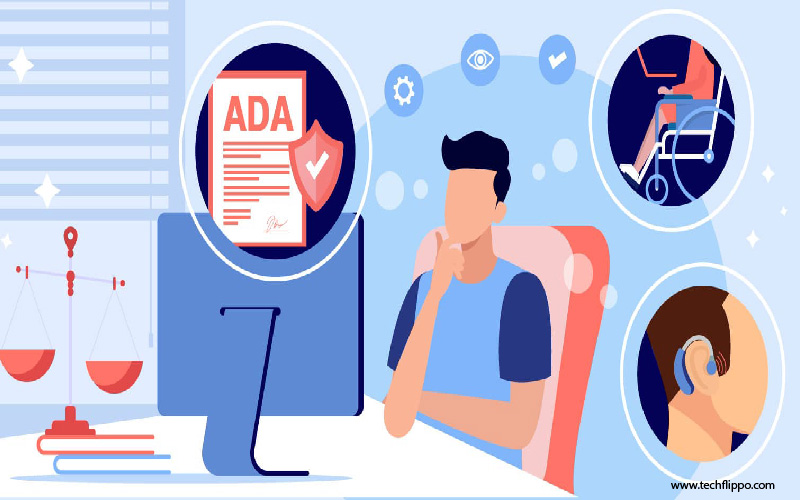A Comprehensive Guide on Ada Support
Welcome to a world where accessibility knows no bounds, where technology bridges the gap between ability and opportunity. In this digital age, inclusion is not just a buzzword but a fundamental right for all individuals. Today, we delve into the realm of Guide on Ada support – an innovative solution that paves the way for a more inclusive society. Join us on this enlightening journey as we explore the benefits of Ada and its transformative impact on accessibility across various industries.

Understanding the Importance of Accessibility
Accessibility is more than just a buzzword – it’s a fundamental aspect of inclusivity in today’s digital age. Imagine navigating a website using only your keyboard or having the text read aloud to you; that’s the reality for many individuals with disabilities. Ensuring that websites, software, and technology are accessible means breaking down barriers and providing equal opportunities for everyone.
Whether its adding alt text to images for screen readers or creating captions for videos, small changes can have a big impact on user experience. Accessibility benefits not only those with disabilities but also older adults, individuals with temporary impairments, and even users in challenging environments like bright sunlight or noisy surroundings.
By prioritizing accessibility in design and development processes, we create a more inclusive online environment where everyone can participate fully without limitations. It’s about embracing diversity and recognizing the value of making information and services available to all individuals regardless of their abilities.
Benefits of Ada for Individuals with Disabilities
Ada plays a crucial role in improving accessibility and inclusivity for individuals with disabilities. By providing features such as screen readers, voice commands, and customizable interfaces, Ada ensures that people of all abilities can navigate digital platforms effortlessly.
For visually impaired users, Ada’s text-to-speech function enables them to access content through audio feedback. This feature allows them to engage with websites and applications independently without relying on visual cues. Additionally, Ada’s keyboard shortcuts and gesture controls benefit those with mobility impairments by simplifying navigation and interaction.
Moreover, the ability to adjust font sizes, color contrasts, and layout options caters to users with various cognitive and sensory disabilities. These customization features enhance readability and usability for individuals who may have difficulty processing information in standard formats.
The benefits of Ada extend beyond mere convenience; they empower individuals with disabilities to fully participate in the digital world on their own terms.

Implementation in Various Industries
Ada support is not limited to one specific industry; its implementation spans across various sectors, making a significant impact on inclusivity and accessibility. In the healthcare industry, Ada ensures that medical facilities are equipped to cater to patients with disabilities, providing them with equal access to quality care.
In the education sector, Ada plays a crucial role in ensuring that students with disabilities have the necessary tools and resources to excel academically. By incorporating Ada support into educational systems, schools can create an inclusive learning environment for all students.
Moreover, in the technology field, companies are integrating Ada features into their products and services to make them more accessible to individuals with disabilities. This proactive approach not only enhances user experience but also demonstrates a commitment to diversity and inclusion within the tech industry.
The implementation of Ada in various industries showcases its versatility and importance in promoting equal opportunities for individuals with disabilities.
How Companies Can Provide Ada Support
Companies can provide Ada support by implementing accessible design principles in their products and services. This involves ensuring that websites, apps, and digital content are compatible with screen readers and other assistive technologies.
Training employees on how to create accessible content is also crucial. By raising awareness about the needs of individuals with disabilities, companies can ensure that all aspects of their operations are inclusive.
Partnering with disability advocacy groups can offer valuable insights into how to improve accessibility further. Collaborating with experts in the field can help companies stay up-to-date on best practices and new developments in ADA compliance.
Regularly conducting accessibility audits and user testing can identify areas for improvement. By actively seeking feedback from individuals with disabilities, companies can continuously enhance their ADA support efforts.
Providing ADA support is not just a legal requirement but a moral obligation for businesses to ensure equal access for all individuals.
Success Stories and Testimonials
Success stories and testimonials are powerful in showcasing the impact of Ada support. Hearing firsthand accounts from individuals who have benefited from accessibility features can truly inspire others.
One success story comes from a visually impaired student who was able to pursue higher education with the help of Ada technology, breaking down barriers that once seemed insurmountable.
Another testimonial highlights how a senior citizen regained independence through using Ada-enabled devices, enhancing their quality of life and daily activities.
Companies implementing Ada support have seen increased customer satisfaction and loyalty as users appreciate the inclusive approach to product design.
These stories serve as a reminder of the importance of prioritizing inclusivity and accessibility in all aspects of life, making a significant difference in people’s lives across various demographics.
Conclusion: The Impact of Ada on Inclusivity and Accessibility
Ada support plays a crucial role in promoting inclusivity and accessibility for individuals with disabilities. By implementing ADA guidelines, companies can ensure that their products and services are easily accessible to all users, regardless of their abilities. This not only helps businesses comply with legal requirements but also demonstrates a commitment to diversity and inclusion.
As we continue to strive towards a more inclusive society, it is essential for organizations to prioritize ADA support in their operations. By making their websites, applications, and physical spaces accessible to everyone, companies can create equal opportunities for individuals with disabilities to participate fully in society.
The impact of Ada goes beyond mere compliance – it fosters a culture of equality where everyone has the opportunity to engage with the world around them without barriers. Embracing Ada support is not just about following regulations; it’s about creating a more equitable and inclusive future for all.